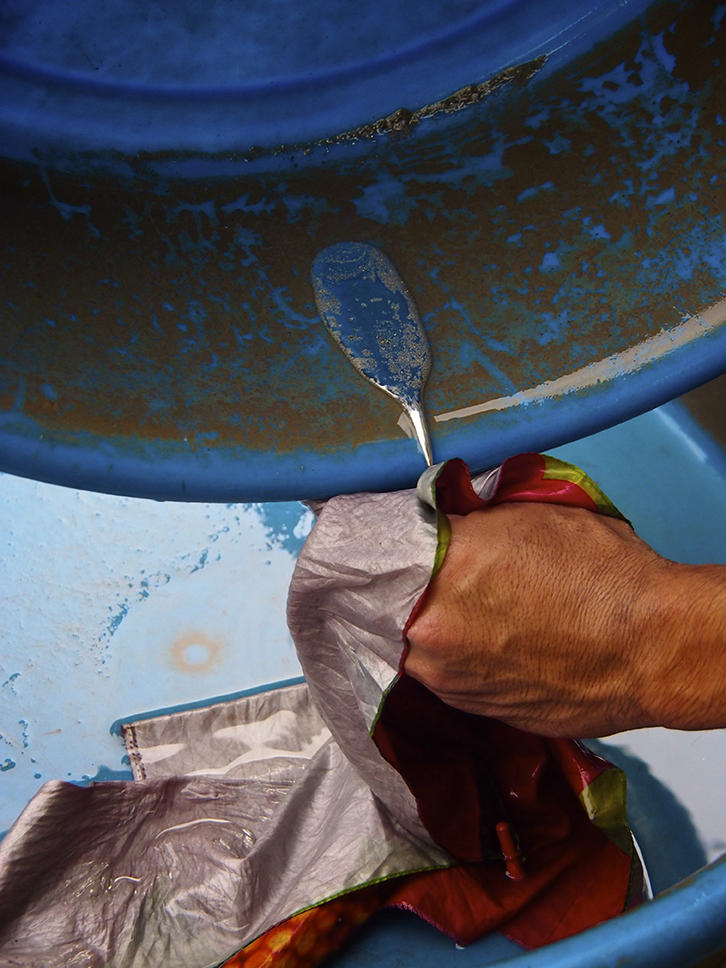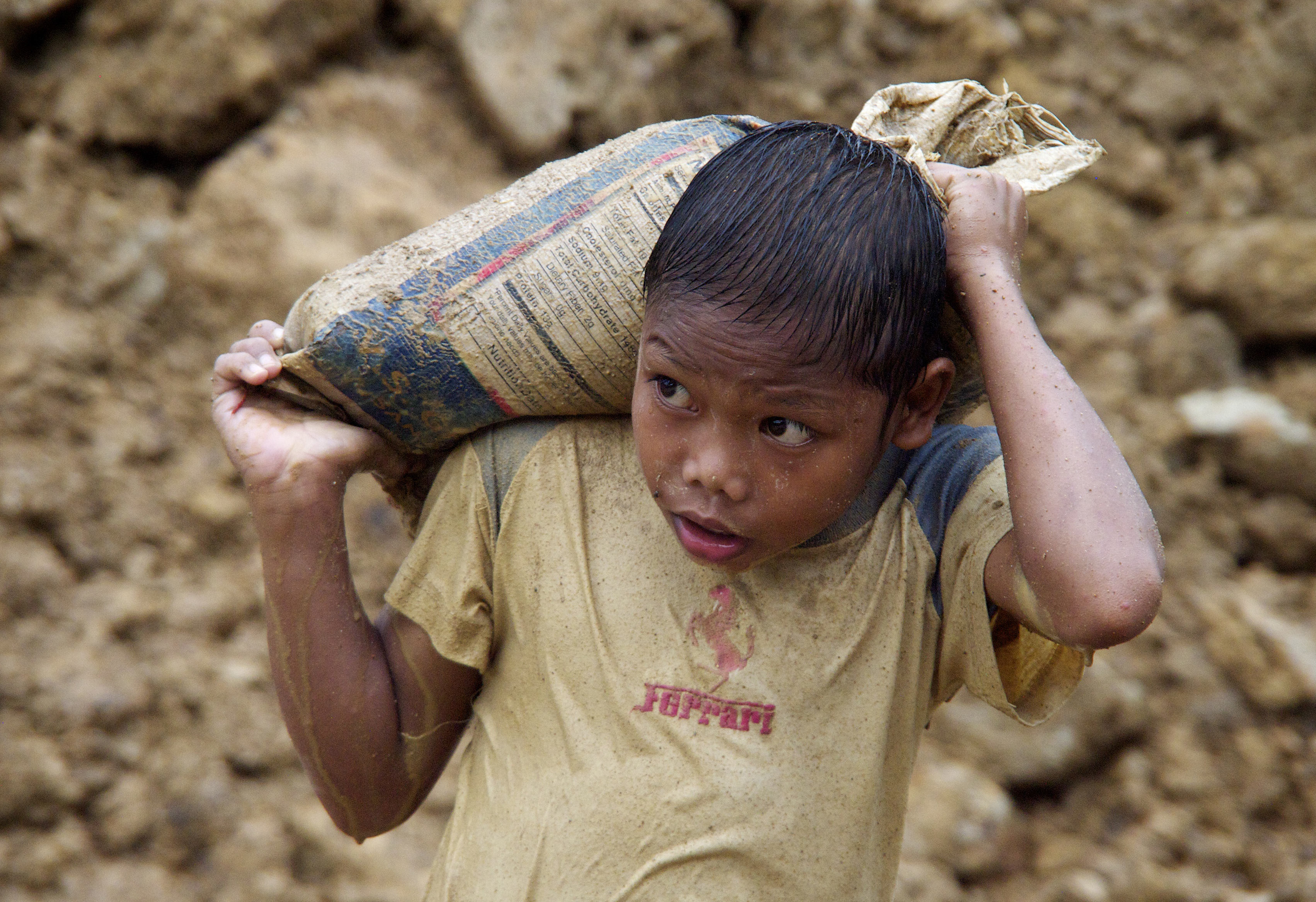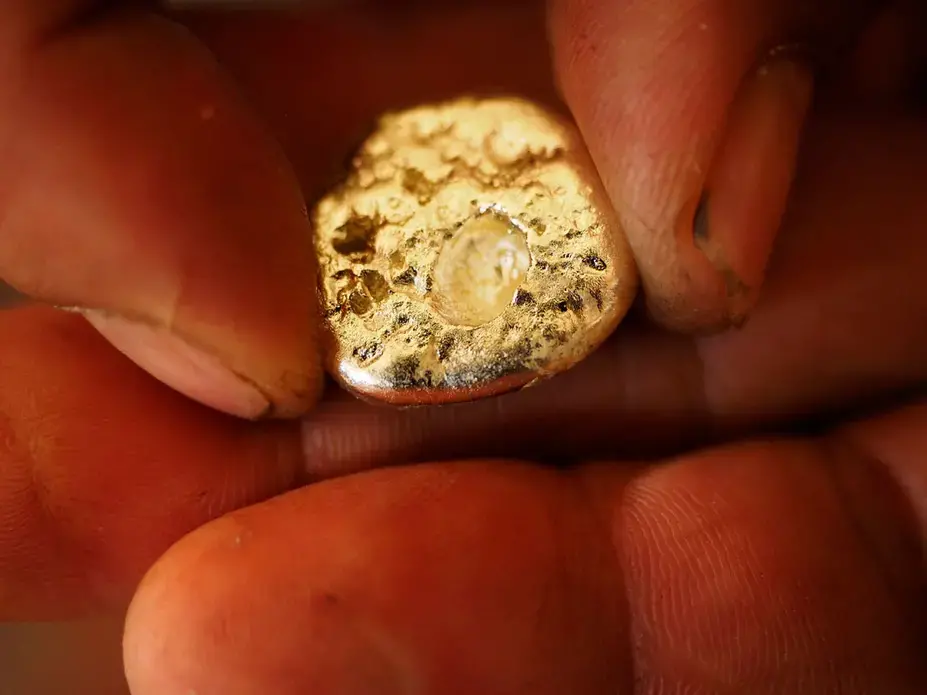They call this place Diwalwal. It is Cebuano slang that literally means "tongues hanging out from exhaustion," or the way that miners describe themselves after a long day's work on the mountain. It is an apt name for this hardscrabble mining town on the steep slope of Mt. Diwata on the Philippine island of Mindanao.
The boom town, a vast sprawling collection of rickety shanties and tin-roofed shacks, is 30 years old and still going strong. It is also a dangerously contaminated place with so much mercury in the air and water that even government health workers sent to assess the situation have been poisoned.
Mt. Diwata, the "golden mountain," is one of the largest sources of gold in the Philippines and possibly the world. (Diwata means nymph or fairy goddess, a throwback to the animist past when Filipinos believed diwata guarded mountains, rivers and streams.) Since the gold rush here began in the early 1980s, mines on the mountain have produced more than 2.7 million ounces of gold, according to government reports in the Philippine press. The Blacksmith Institute, which monitors mining around the world, estimates that $1.8 billion worth of gold remains in the ground. Large mining companies extract most of the gold, but the small-scale miners have their own 1,800-acre reserve with Diwalwal at its center.
At the height of the Mt. Diwata gold boom, more than 100,000 people lived and worked in Diwalwal. Today, the town is home to an estimated 20,000 to 30,000 miners and their families, including thousands of children, who are constantly breathing mercury fumes and dust from the ore processing that goes on all around them.
Drainage from the mines courses through the streets of Diwalwal nonstop, carrying mercury, cyanide and other toxic chemicals into the Naboc and Agusan River. The Blacksmith Instituted cited the gross mercury and cyanide contamination of these rivers when it named Diwalwal one of the most polluted mining sites in the world.
No one disputes that Diwalwal is an environmental nightmare. Drinking water must be piped into the town through a spaghetti-like tangle of plastic pipes laid on the ground. "Don't go in the water. Don't even touch it," one local warned.
In 2001, the United Nations Industrial Development Organization (UNIDO) found above-normal blood mercury levels in almost everyone tested. No significant mercury testing has been done since. Sarah Tanghian, the town administrator of Monkayo, the provincial capital, said that the Philippine government won't pay for testing and the local government can't afford the $550 per person cost—even though many residents show symptoms of mercury poisoning.
Ironically, the very people who are at greatest risk of mercury poison, also have been the most resistant to change, government officials say. Miners have built their three- and four-story tin-roofed shacks on top of rooms that house ball mills, crude drum-and-pulley machines that tumble and break the rock into fine powder. They store barrels of Chinese cyanide and containers of mercury in the rooms where they eat and sleep.
The clanking grinding sounds of the ball mills drown out normal conversation on the floors above. Worse, mercury added to the ore in the ball mill is released into the air with the dust. Once ground, the ore is panned with mercury and water to create a paste-like amalgam which is then pressed into a plastic bag and burned with an acetylene torch. The mercury and plastic burns away, leaving pure gold. The panning spills mercury into the water and the burning releases more mercury vapors into the air. Cyanide also is used in the processing, but mostly by the larger operations.
Efforts to move the processing away from places where people live have largely failed.
"The miners themselves don't want to change their methods," says Joan Pintal, Monkayo city administrator.
Monkayo is 18 miles from Diwalwal. The last 10 miles of the jungle road that leads up to Diwalwal is no more than a rutted dirt track. It is convenient—and more lucrative—for the miners to process their own ore into nuggets than to send heavy bags of rocks down the mountain.
Complicating matters are the guerrilla groups, including the notorious New People's Army (MPA) who patrol the jungle, collecting "taxes" from the miners and other businesses and discouraging government officials from enforcing the few laws that do exist.
Joel Briallentes, a former Monkayo mayor, did try to clean up Dilwalwal, but his efforts may have cost him his life. He was assassinated during his 2003 bid for re-election.
"His dream was to relocate people and to build a tailings dam so mercury wouldn't be released into the river," Pintal said.
Mercury, a naturally occurring metal, is a potent neurotoxin that causes brain and nerve damage when ingested, inhaled or absorbed through the skin. Mercury accumulates in the food chain, especially in fish, and so can poison people many miles from the source of contamination. Unborn babies and young children are at greatest risk, although unchecked mercury poisoning can be devastating at any age.
"The small-scale gold mining sector is the largest emitter of mercury in the country," says Richard Guiterrez, founder of Ban Toxics, a nonprofit organization that is trying to teach miners to use Borax, an effective and safe alternative to mercury. "There's a huge concern about how this poison is affecting the current generation of children and succeeding generations of Filipinos if it is allowed to continue in small- scale-mining."
Charlita Baluis, a sanitary inspector in Monkayo, knows firsthand the dangers of mercury poisoning. As a young public service worker, she was assigned to monitor the cleanliness of restaurants in Diwalwal from 1993 to 2001. She was careful about what she ate and drank and did not work around the ore processing facilities. After her hands began to tremble, a tell-tale sign of mercury poisoning, tests founds that she had accumulated dangerously high levels of mercury in her blood, just from walking about the town. Four other colleagues also had dangerously high levels of mercury in their blood. They left Diwalwal immediately and underwent chelation therapy to remove the metal from their bodies. She recovered but worries about the residents of Diwalwal who are continuously exposed to mercury.
"After so many years," Balius says, "we squander in hell, toil in sweat, searching for wealth."

Education Resource
Larry C. Price Reports on Small-scale Gold Mining
Photojournalist Larry C. Price traveled to the Philippines and Indonesia to document the use of...


























































































































